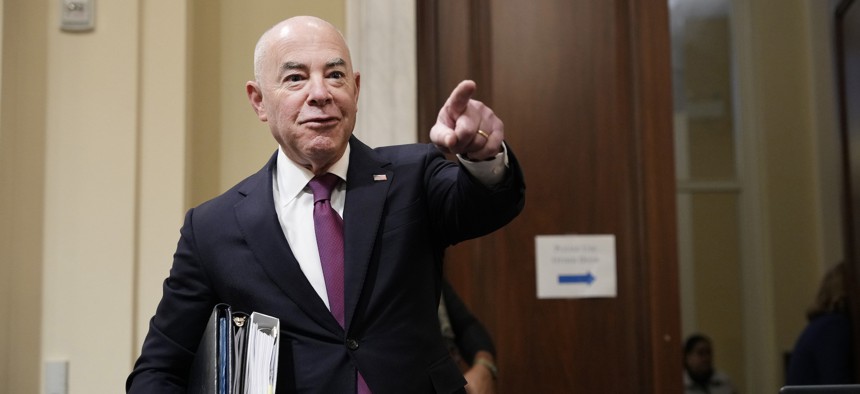In the ongoing battle against adversarial AI, the Department of Homeland Security (DHS) is taking a prominent position, actively utilizing artificial intelligence tools to counter emerging threats. Secretary Alejandro Mayorkas, in a recent panel discussion with Axios, highlighted the agency’s commitment to leading the charge in leveraging AI for defense against adversarial applications.
Mayorkas emphasized the Department of Homeland Security’s commitment to taking a leading role in utilizing AI for defense against adversarial applications, stating that their intention is to be at the forefront of AI utilization, particularly in countering adversarial uses. This sets the stage for a comprehensive exploration of how DHS is integrating AI into its operations and the challenges it faces in mitigating the risks associated with this rapidly evolving technology.
DHS’s AI applications
Under the first sub-heading, delve into the practical applications of AI within DHS operations. From enhancing border patrol efforts to combating drug trafficking and creating age progression estimations for missing children, Mayorkas details how AI and machine learning models are becoming integral to the agency’s diverse functions.
Mayorkas emphasizes the speed at which AI algorithms enable DHS to collect, process, and analyze extensive datasets. The ability to make swift decisions and identify anomalies across various fields is highlighted as a key advantage. The adoption of AI in report processing, where thousands of interviews and reports are reviewed, is presented as a labor-saving measure, allowing investigators to identify patterns and connections in a matter of seconds.
Mitigating AI-specific risks
The second sub-heading explores the awareness within DHS of the potential threats arising from the lack of regulation and ongoing innovation in AI. Mayorkas discusses the agency’s simultaneous efforts to mitigate these risks, including the spread of disinformation and the potential development of biological weapons through automation.
With the release of new global guidance for AI development, DHS has aligned with the Biden administration’s push for a secure-by-design software development philosophy. Mayorkas stresses the importance of improving public digital literacy and awareness of common phishing attacks. Also, forging new public-private sector collaborations is emphasized as a crucial step in ensuring a comprehensive and adaptive defense against adversarial AI.
Society’s collective response to adversarial AI challenges
The Department of Homeland Security emerges as a trailblazer, seamlessly integrating artificial intelligence into its operational fabric to enhance efficiency. Yet, the intricate dance between harnessing the benefits of AI and navigating the risks of an unregulated landscape presents a formidable challenge. As DHS continues its nuanced navigation, a crucial question surfaces: How can society collectively elevate its digital literacy to comprehend and navigate the evolving nuances of AI?
This imperative extends beyond government agencies, urging a united effort to empower individuals and communities with the knowledge needed to understand, adapt to, and mitigate potential risks associated with AI. Strengthened collaborative initiatives across public and private sectors become paramount, fostering alliances and shared responsibilities. This collective resilience is essential not only for countering adversarial AI but also for shaping a future where technology serves as a force for good, safeguarded by a digitally literate and collaborative community.





